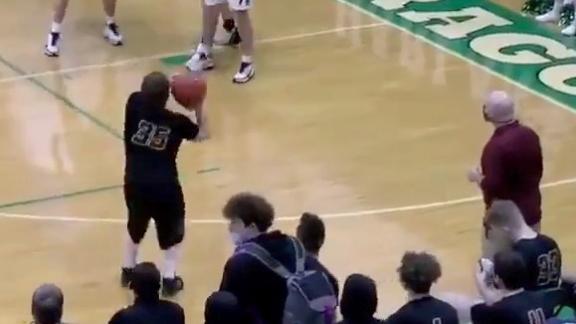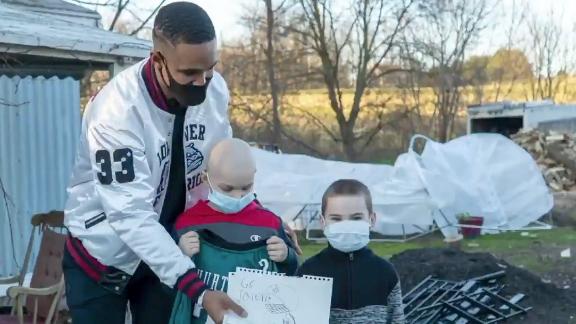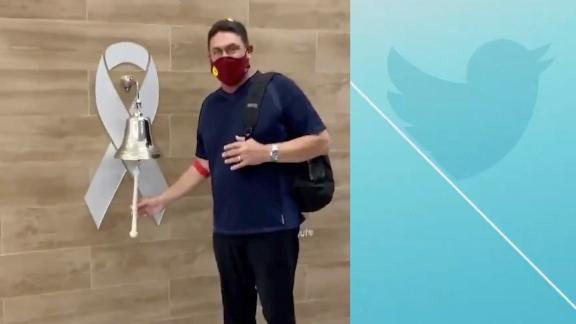After Valencia, it's apparently not Ferrari's season in any way, shape or form. It was a weekend in which the Italian team looked poised for a turnaround; Fernando Alonso set the fastest time in the second practice, and the duo of Alonso and Felipe Massa qualified fourth- and fifth-quickest, respectively.
Terrible timing was the team's undoing in Spain, however, as Mark Webber's scary crash brought out the safety car just ahead of the Ferraris.
The prancing horse outfit quickly looked Lewis Hamilton's way, as he was just ahead of Alonso and Massa. Hamilton passed the safety car, and was later penalized, but the Ferrari drivers felt as if they had been held up. Claims that Hamilton was not truly penalized seem unfounded, however. It is true that he did not lose a position on the track, but he lost massive amounts of time to leader -- and ultimate winner -- Sebastian Vettel.
Following his penalty, Hamilton made up a considerable number of seconds in regards to Vettel, but in the end it was not enough. In reality, Hamilton's penalty cost him a good chance at first.
Vettel's drive was uneventful, save for locking the brakes while returning to green-flag conditions after Webber's accident, and he drove a remarkably smooth race.
He was one of the few drivers who had a quiet day; 10 total drivers were penalized after the race, Michael Schumacher had a drive to forget with a 15th-place finish and Webber had the frightening accident that had to remind him of his Mercedes flipping at Le Mans in 1999.
Webber was very fortunate to have walked away from both. It ended his eight-race streak of earning points this season, the longest single-season streak of his career, but more importantly, it highlights the safety innovations in Formula One as well as throughout motorsports.
Most consecutive races earning points -- Mark Webber in F1 (Single Season)
Season -- Consecutive races earning points -- Team
2010 -- eight -- Red Bull
2009 -- six -- Red Bull
2008 -- five -- Red Bull
2005 -- four -- Williams
There have been some major accidents throughout racing lately; Mike Conway's flight into the fences at this year's Indianapolis 500, Carl Edwards crashing into the Talladega fences on the final lap of the Sprint Cup race last season as well as Stephane Ortelli's huge shunt at Monza two seasons ago in a Le Mans Series race.
All these events share commonality in that the drivers avoided serious injury and were able to walk away from the crash. It's fortunate that there are drivers such as three-time world champion Jackie Stewart, who fought for more driver and circuit safety during the 1960s and 1970s. Without his efforts, the development of safety barriers, proper seat restraints and training of safety workers might well have been a long way off.
Valencia was a chaotic race, and Vettel deserved the win. Meanwhile, McLaren put both of its cars on the podium for the third straight event. Vettel needed a strong finish, and he's now well within striking distance of the McLaren boys. Hamilton was seeking a third straight win for the first time in his career, and he's now finished second at Valencia all three times the race has been held there.
Rubens Barrichello benefited from the chaos that ensued following the release of the safety car, finishing fourth, four places better than his previous-best result with Williams. But the 2009 Valencia winner had a very strong drive, holding off Robert Kubica for over 40 laps.
It was a banner day for Sauber driver Kamui Kobayashi , who overtook Fernando Alonso and Sebastien Buemi in the closing laps on fresh tires to finish seventh. It's a huge statement for him, as he showcased some of the talent he had previously displayed in two races with Toyota last season. If Kobayashi can continue to post points finishes, as he has in two of the past three races, then his six retirements in the first eight races of the season will soon be forgotten.
Big changes to the Formula One landscape came a week ago, and among them was the announcement of the return of the 107 percent rule. In essence, any driver who does not set a lap within 107 percent of the fastest time in Q1 will not be allowed to start the race, unless there are exceptional circumstances, such as bad weather. For example, if Lewis Hamilton sets a qualifying time of 1:15.000, then every driver must set a fastest lap of at least 1:20.25 in order to make it into the event.
This would have been an issue for several teams at the beginning of the season, but not as much of one now. Under those rules, both HRT cars would have failed to qualify for the opening race of the season, and at least one driver would not have made the field in three of the first five events (not including Alonso in Monaco, who was not able to participate in qualifying). Of the last four events, however, only Karun Chandhok would have been watching the race from the sidelines.
Would not have qualified with 107 percent rule in effect -- 2010
Event -- Driver(s)
Bahrain -- Bruno Senna, Karun Chandhok
Australia -- None
Malaysia -- Lucas di Grassi
China -- None
Spain -- Senna
Monaco -- None
Turkey -- None
Montreal -- Chandhok
Valencia -- None




